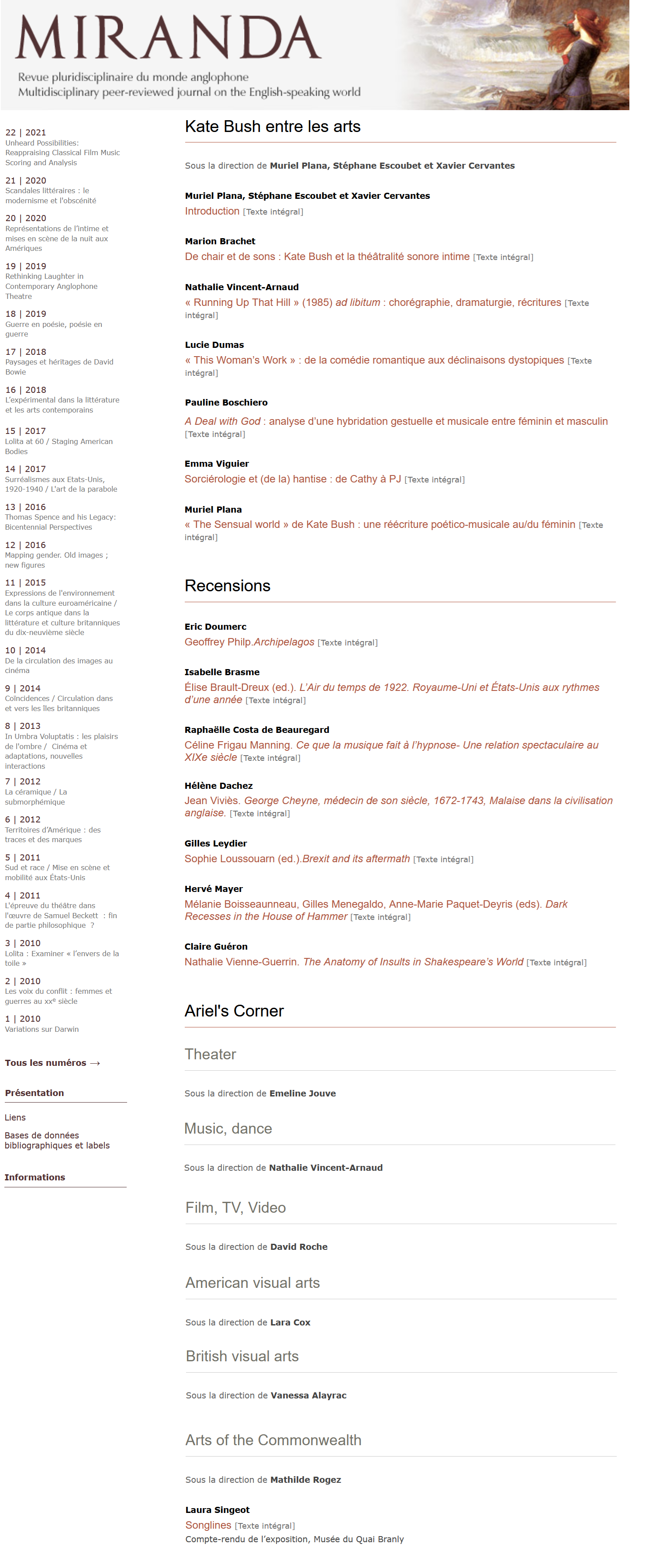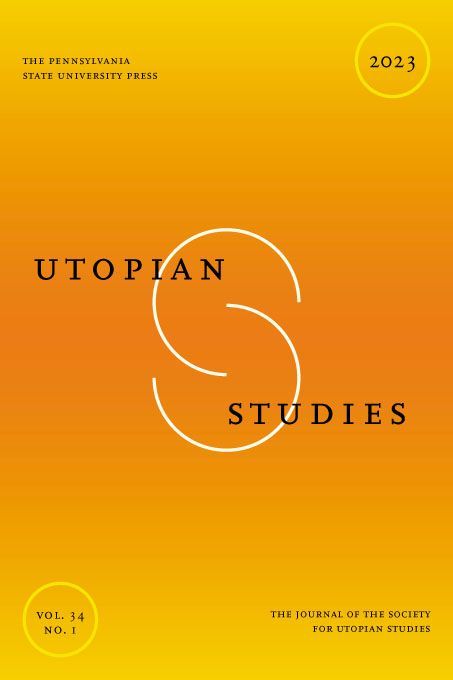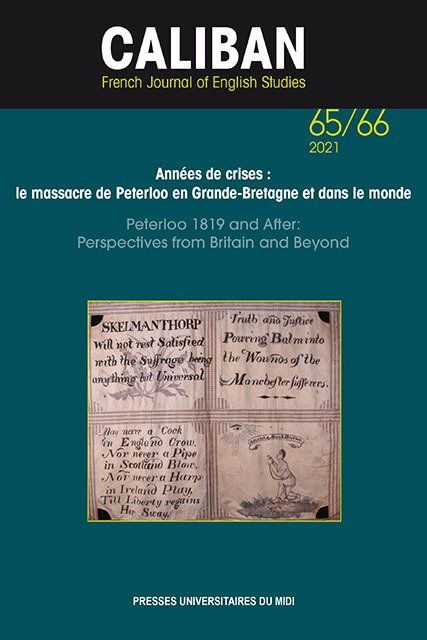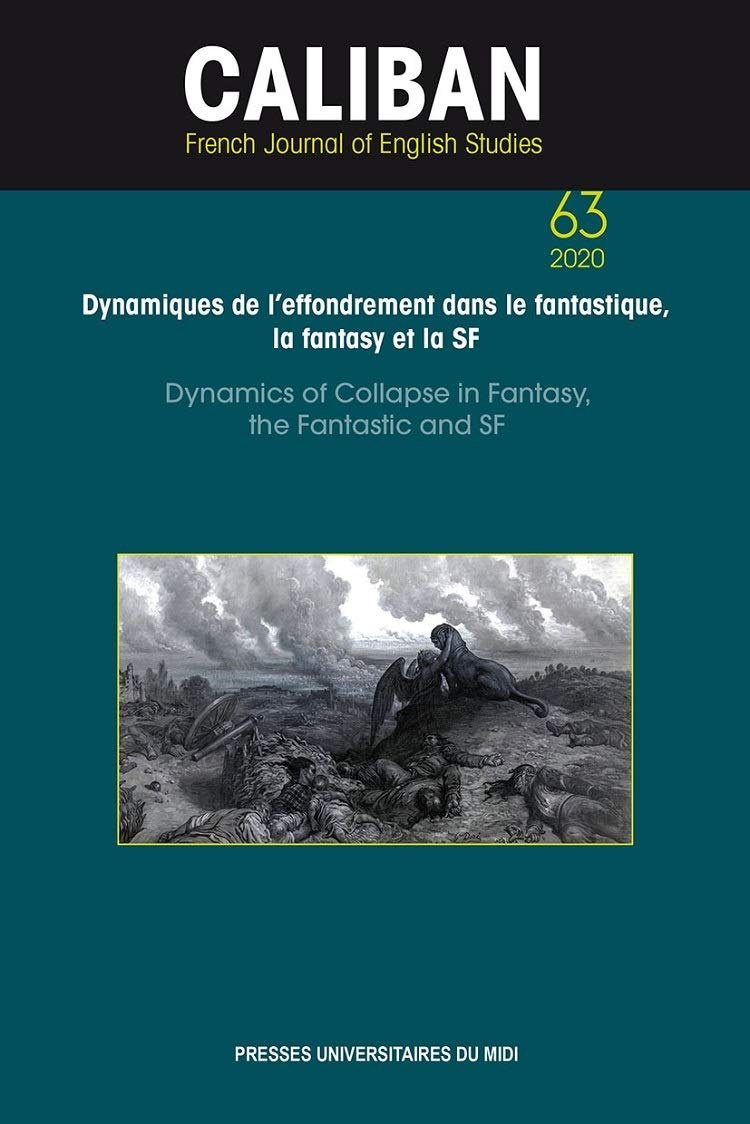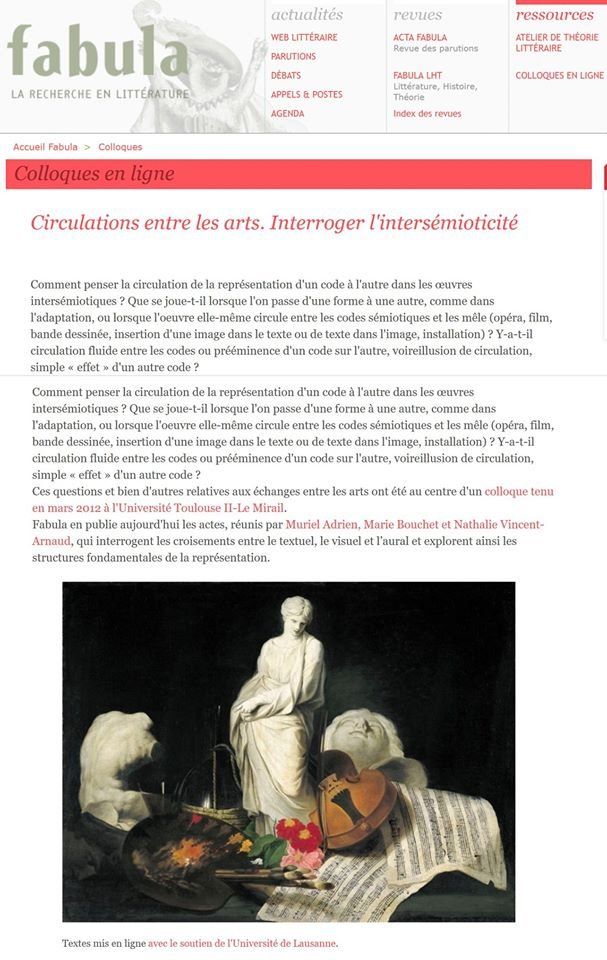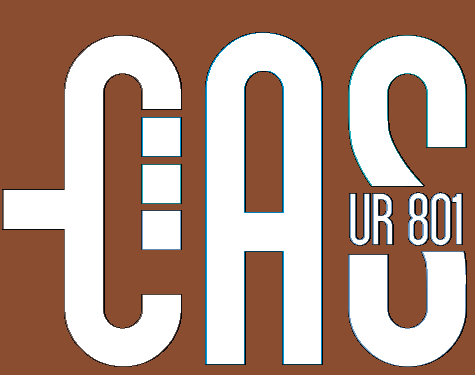CHA
AN ASIAN LITERARY JOURNAL
Cha is an English-language Hong Kong literary journal devoted to Asian arts and cultures. I wrote an article for their reviews section entitled "Johannes Schönherr's North Korean Cinema: Rise (and Fall?) (and Rise again?) of the Propaganda Machine", which was published on the journal's blog in October 2025.
This analysis of Johannes Schönherr's monograph, North Korean Cinema: A History, presents the approach and strengths of a book that is both a historical account of the film production of the Kim family's bizarre communist-monarchical dictatorship, a long series of critical summaries and contextualizations, and which also contains fascinating interviews with, among other people, defectors living in South Korea who recall their experiences as filmgoers while still living in the totalitarian environment they've fled since. The reading and analysis of Schönherr's work allows us to put into perspective the importance of the works of Shin Sang-ok, a South Korean filmmaker kidnapped by the regime and forced to make films in North Korea in the early 1980s, and, by contrast, the astonishing insignificance of the film treatise written by the cinephile dictator behind this story, Kim Jong Il. The German author's work also offers a striking panorama of the micro-evolutions and stagnations of a film production that remains fixed on its propagandistic fundamentals despite decades of global upheaval, and despite the aesthetic shock created, for a short period, by Shin Sang-ok's films.
The article is available at this address:
https://chajournal.blog/2025/10/11/korean-cinema/
The page of the book North Korean Cinema: A History on the website of its publisher:
MIRANDA
REVUE PLURIDISCIPLINAIRE DU MONDE ANGLOPHONE
MULTIDISCIPLINARY PEER-REVIEWED JOURNAL ON THE ENGLISH-SPEAKING WORLD
Issue 31
The spring 2025 issue of the journal Miranda contains, in the music sub-section (edited by Nathalie Vincent-Arnaud) of its Ariel's Corner section, the second part of my article entitled "Aux sources de la chanson réaliste folk punk de François Hadji-Lazaro : échos d’Irlande, d’Écosse et d’Amérique."
This article explores the diverse influences of folk music from the English-speaking world, from various shades of Americana (especially Cajun music) to the Celtic traditions of Scotland and Ireland, on the eclectic output of multi-instrumentalist punk singer-songwriter
François Hadji-Lazaro, who was the leader of the rock bands
Pigalle,
Les Garçons Bouchers and
Los Carayos in the 1980s and 1990s, a producer through his alternative record label
Boucherie Productions (1985-2001), and who died on February 25, 2023.
The article is, like the rest of the issue, available online at the following address:
https://journals.openedition.org/miranda/66387
MIRANDA
MULTIDISCIPLINARY REVIEW OF THE ENGLISH-SPEAKING WORLD
MULTIDISCIPLINARY PEER-REVIEWED JOURNAL ON THE ENGLISH-SPEAKING WORLD
Issue 29
The spring 2024 issue of the journal Miranda contains, in the music sub-section (edited by Nathalie Vincent-Arnaud) of its Ariel's Corner section, the second part of my second "musical stroll" entitled "Quelques escapades musicales en Bretagne: voyage sans bateau de Belfast à Cardiff en passant par Beyrouth".
(The first part was called "Quelques escapades musicales en Bretagne: voyage sans bateau du Donegal aux Highlands et du pays de Galles aux Asturies", and was published in the previous issue, in autumn 2023.)
Like the first of these "musical strolls" ("Dix jours d'un concert à l'autre à la Nouvelle-Orléans"), it is an experimentation in hybridity between the forms of a research paper (with an apparatus of informative and analytical endnotes based on scientific, journalistic sources, as well as primary sources from the music medium, the video medium, etc.), of more impressionistic criticism, and of a literary text (in the genre of the travel journal/logbook). This time, after New Orleans, the text deals with a musical journey through various places in Brittany, mainly in Lorient, during the town's international Celtic music festival—a journey that took place during the summer of 2023.
The article is, like the rest of the issue, available online at the following address:
https://journals.openedition.org/miranda/59980
MIRANDA
MULTIDISCIPLINARY REVIEW OF THE ENGLISH-SPEAKING WORLD
MULTIDISCIPLINARY PEER-REVIEWED JOURNAL ON THE ENGLISH-SPEAKING WORLD
Issue 28
The autumn 2023 issue of the journal Miranda contains, in the music sub-section (edited by Nathalie Vincent-Arnaud) of its Ariel's Corner section, the first part of my second "musical stroll" entitled "Quelques escapades musicales en Bretagne: voyage sans bateau du Donegal aux Highlands et du pays de Galles aux Asturies".
Like the first of these "musical strolls" ("Dix jours d'un concert à l'autre à la Nouvelle-Orléans"), it is an experimentation in hybridity between the forms of a research paper (with an apparatus of informative and analytical endnotes based on scientific, journalistic sources, as well as primary sources from the music medium, the video medium, etc.), of more impressionistic criticism, and of a literary text (in the genre of the travel journal/logbook). This time, after New Orleans, the text deals with a musical journey through various places in Brittany, mainly in Lorient, during the town's international Celtic music festival—a journey that took place during the summer of 2023.
Unlike the previous one, this second episode of the musical strolls series will itself be published in two parts, the second part being planned for the next issue of Miranda, in spring 2024.
The article is, like the rest of the issue, available online at the following address:
https://journals.openedition.org/miranda/56028
The first 2023 issue of American journal Utopian Studies contains, in its "Book Reviews" section, my review of the essay Fabuler la fin du monde. La puissance critique des fictions d'apocalypse (2019) by Jean-Paul Engélibert, which details the way in which apocalypse stories have shifted, over time, from being written from a religious outlook to relying on physical and particularly environmental and climatic inspirations. It then shows the different ways in which the first modern apocalypse stories, in the 19th and early 20th centuries, served as forerunners to today's works devoted to climate change and other current issues. Finally, Engélibert's work strives to prove that by creating an imaginary space of post-apocalyptic tabula rasa (a kairos opposed to the chronos of normal pre-apocalyptic life), apocalypse fiction can help generate pragmatic and dynamic thinking on new conditions and the actions to be carried out from a new context, and therefore motivation rather than discouragement, or what Michel Deguy called L'Énergie du désespoir [The Energy of Despair] (1998).
To that effect, Engélibert mainly studies Jean-Baptiste Cousin de Grainville's Le Dernier homme (1805), Mary Shelley's Frankenstein (1818), Émile Souvestre's Le Monde tel qu'il sera (1846), Didier de Chousy's Ignis (1883), Robert Merle's Malevil (1972), José Saramago's Blindness (1995), Antoine Volodine's Minor Angels (1999), Don DeLillo's Cosmopolis (2003), Cormac McCarthy's The Road (2006), Céline Minard's Le Dernier monde (2007), Davide Longo's The Last Man Standing (2010), Margaret Atwood's MaddAddam novel trilogy (2003, 2009, 2013), the films On the Beach (1959) by Stanley Kramer, Melancholia (2011 ) by Lars von Trier, 4:44 Last Day On Earth (2012) by Abel Ferrara, and Ghost in the Shell (1995) by Mamoru Oshii, the short story “The Machine Stops” (1909) by E.M. Forster, the drama trilogy The War Plays (1985) by Edward Bond, and the first season (2014) of the television series The Leftovers (2014-2017) by Damon Lindelof and Tom Perrotta.
The journal's review on the publisher's website:
https://www.psupress.org/journals/jnls_utopian_studies.html
The issue's page on digital platform Scholarly Publishing:
https://scholarlypublishingcollective.org/psup/utopian-studies/issue/34/1
Engélibert's book's page on its publisher's website:
https://www.editionsladecouverte.fr/fabuler_la_fin_du_monde-9782348037191
This multi-authored collection, published by Cambridge Scholars Publishing on August 29, 2023 and edited by Françoise Besson, contains my paper "How Bugs, Monarchs and Trees Shape Human Fate and Experience in Peter Kuper's Diario de Oaxaca and Ruins".
This article focuses on the relationship with the environment (sometimes "anthropocentric", sometimes "biocentric" or at least "lococentric" (notions borrowed from US ecocritic Lawrence Buell)), which is developed in two graphic works that American comics author and cartoonist Peter Kuper created about his stay in Mexico from 2006 to 2008: the real-life sketchbook journal Diario de Oaxaca (2009), and the fictional graphic novel Ruins (2015).
This reflection involves, among other things, an analysis of images, and in particular the use of graphic saturation, particularly on a thematic level (with the role given to animals and plants in general, to “bugs” in particular) in two graphic narratives aimed at immersing the reader in the colorful and vibrant and teeming world of Mexico as Kuper experienced it.
The book’s page on the publisher's website:
https://www.cambridgescholars.com/product/978-1-5275-1287-0
Diario de Oaxaca’s page on its publisher's website: https://pmpress.org/index.php?l=product_detail&p=894
Ruins’s page on its publisher's website:
CALIBAN N°65-66
PETERLOO 1819 AND AFTER: PERSPECTIVES FROM BRITAIN AND BEYOND
Années de crises: le massacre de Peterloo en Grande-Bretagne et dans le monde
The collective collection Caliban 65-66: Années de crises: le massacre de Peterloo en Grande-Bretagne et dans le monde/Peterloo 1819 and After: Perspectives from Britain and Beyond, published in November 2022 and edited by Rachel Rogers and Alexandra Sippel, contains, at the end of the issue, in a section devoted to reviews of scientific works on various themes, edited by Nathalie Rivère de Carles and Emeline Jouve, my review of the collective collection 21st Century Dylan. Late and Timely, edited by Laurence Estanove, Adrian Grafe, Andrew McKeown, and Claire Hélie and published by Bloomsbury, which offers many analyses with different approaches, around the cultural figure of Bob Dylan today, his activities, the evolution of his music, his cultural heritage, the way he manages his image as an aging legend, patriarch of folk and rock, etc.
Caliban 65-66's page on its publisher's website:
My text, as well as the whole issue, can also be read on line:
https://journals.openedition.org/caliban/10914
21st Century Dylan's page on its publisher's website: https://www.bloomsbury.com/us/21stcentury-dylan-9781501363696/
MIRANDA
REVUE PLURIDISCIPLINAIRE DU MONDE ANGLOPHONE
MULTIDISCIPLINARY PEER-REVIEWED JOURNAL ON THE ENGLISH-SPEAKING WORLD
Issue 26
The autumn 2022 issue of the journal Miranda contains, in the music sub-section (edited by Nathalie Vincent-Arnaud) of its Ariel's Corner section, my text entitled "Dix jours d'un concert à l'autre à la Nouvelle-Orléans".
It is an experimentation in hybridity between the forms of a research paper (with an apparatus of informative and analytical endnotes based on scientific, journalistic sources, as well as primary sources from the music medium, the video medium, etc.), of more impressionistic criticism, and of a literary text (in the genre of the travel journal/logbook), this text invites the reader to share with me a musical journey through the clubs, streets, cafes, restaurants and one of the museums of the Crescent City nestled in the hollow of the Mississippi, from jazz to blues to folk to Cajun music and occasional rock, mirroring the similar journey I had the opportunity to experience during the summer of 2022.
The article is, like the rest of the issue, available online, at the following address:
CHA
AN ASIAN LITERARY JOURNAL

Cha is an English-language Hong Kong literary journal devoted to Asian arts and cultures. I wrote, for their "reviews" section, an article entitled "Strange Beasts of China: Harnessing Zhiguai and Magic Realism to Satirise Othering" published on the journal's blog in November 2022.
This analysis of the contemporary fantasy novel Strange Beasts of China, by Yan Ge, examines the ways in which this series of tales set in present-day China, evoking various species of monstrous "beasts", and all intertwined in such a way as to reveal the secrets of the origins of the (human) (or is she, really?) narrator, borrows from zhiguai through some of its themes, to magic realism through its ambiguous treatment of the status of the supernatural, and to postcolonial discourse in the way it denounces otherning through the symbolic example of "beasts" and the way they are treated by humans.
The article can be read at this address: https://chajournal.blog/2022/11/16/beasts/
Strange Beasts of China's page on its publisher's website: https://www.tiltedaxispress.com/store/strange-beasts-of-china
CHA
AN ASIAN LITERARY JOURNAL

Cha is an English-language Hong Kong literary journal devoted to Asian arts and cultures. I wrote, for their "reviews" section, an article entitled "Chinese Poetry and Translation: A Multi-Angled Overview of What Happens When Worlds Collide", published on the journal's blog in September 2022.
This long review of the collection of essays Chinese Poetry and Translation. Rights and Wrongs, co-edited by Lucas Klein and Maghiel van Crevel, presents the many issues explored in the book by authors from a wide variety of backgrounds (more or less all of them being poets, translators and scholars specializing in translation studies and/or Chinese literature), and which deal in turn with the influences of Russian, Anglophone, French or German-speaking authors on various Chinese poets, the cultural influence of classical Chinese poetry and the difficulties encountered by translators due to the extreme archaism of the Chinese language used in these ancient texts, of the internal, aesthetic and ideological struggles between the modern proponents of one school of poetry or another, of the approaches that a translator can adopt according to their culture and their personal experience, the place to be given to the culture and experience of the author of the source text, intellectual interactions between poetry, translation and theoretical commentary, etc.
The article can be read at this address:
https://chajournal.blog/2022/09/15/chinese-poetry-translation/
The book Chinese Poetry and Translation can both be purchased or read online for free from this address:
https://www.aup.nl/en/book/9789462989948/chinese-poetry-and-translation
MIRANDA
REVUE PLURIDISCIPLINAIRE DU MONDE ANGLOPHONE
MULTIDISCIPLINARY PEER-REVIEWED JOURNAL ON THE ENGLISH-SPEAKING WORLD
Issue 25
The spring 2022 issue of the journal
Miranda contains, in the music sub-section (edited by
Nathalie Vincent-Arnaud) of its
Ariel's Corner section, my article "« Vienne bientôt l’avitailleur » : viralité fraternelle et musique en ligne en temps de COVID — le cas du ShantyTok".
This new text is a sequel to my previous
Ariel's Corner article "Krakauer-Tagg Duo: du souffle et des marteaux pour abattre les murs du confinement" (on the album
Breath & Hammer by David Krakauer and Kathleen Tagg, its relationship to the covid lockdown context, and to the spread of online music as a tool to create social cohesion). This sequel continues the study of the use of online music to bring together the lockdown-stricken, social distancing-afflicted, COVID-threatened from the English-speaking world. The analysis focuses, this time, on the ShantyTok, which is the name of the early-2021 explosion of viral videos on the social network TikTok (with subsequent uploads and sharing on other social media), devoted to the collective performance of sea shanties by TikTok users. The impacts of the COVID context, of TikTok's mood and how TikTok works, of how virality works, of the rallying properties of sea shanties' musical form, of their escapist cultural content, are examined in parallel to explain this sudden craze of a hyperconnected, anxious and reluctantly isolated youth for the catchy choral singing of hard-at-work Victorian sailors. In doing so, the article makes you travel upon all seas, from that of digital platforms, social networks and online video games, to that of real sailors and that of literary, musical and mythical sailors, from the seas that lie off the coasts of Victoria's Great Britain, and the Ireland and Scotland of folk bands and pubs, to those that lead to the Caribbean and America of the antebellum and Reconstruction periods, up until the sea that passes between the Australia and New Zealand of the whaling days.
The article is, like the rest of the issue, available online at the following address: https://journals.openedition.org/miranda/45765
MIRANDA
REVUE PLURIDISCIPLINAIRE DU MONDE ANGLOPHONE
MULTIDISCIPLINARY PEER-REVIEWED JOURNAL ON THE ENGLISH-SPEAKING WORLD
Issue 22
2
The spring 2021 issue of the journal
Miranda, contains, in the section
Reviews
(edited by
Candice Lemaire and
Isabelle Keller-Privat),
my review of two fascinating Alan Moore-focused books by
Pádraig Ó Méalóid:
Poisoned Chalice: The Extremely Long and Incredibly Complex Story of Marvelman (and Miracleman) (devoted to the inextricable legal battles that have prevented the continuation of Alan Moore, Neil Gaiman et al.'s comic book series
Miracleman for almost three decades, and
Mud and Starlight.
The Alan Moore Interviews, 2008-2016, which is, as its subtitle suggests, a collection of the many interviews with Alan Moore carried out by Ó Méalóid over the years.
The article is, like the rest of the issue, available online at the following address:
https://journals.openedition.org/miranda/38271
Here is one of the addresses where you can get
Poisoned Chalice:
https://www.lulu.com/shop/padraig-o-mealoid/poisoned-chalice-the-extremely-long-and-incredibly-complex-story-of-marvelman-and-miracleman/paperback/product-23858084.html?page=1&pageSize=4
Here is one of the addresses where you can get
Mud and Starlight:
https://www.lulu.com/en/us/shop/p%C3%A1draig-%C3%B3-m%C3%A9al%C3%B3id-and-alan-moore/mud-and-starlight-interviews-with-alan-moore-2008-2016/paperback/product-6744gq.html?page=1&pageSize=4
CALIBAN N°63
DYNAMICS OF COLLAPSE IN
FANTASY, THE FANTASY AND SF
Dynamiques de l'effondrement dans le fantastique, la fantasy et la SF
The collective collection
Caliban 63: Dynamiques de l'effondrement dans le fantastique, la fantasy et la SF/Dynamics of Collapse in Fantasy, the Fantastic and SF, published in
January 2021 and edited by
Florent Hébert and myself, contains, after the thematic dossier of scholarly articles that we edited, a section entitled "Detours", edited by
Helen Goethals and
James Gifford, which includes reviews, small essays, poems and short stories on the same collapsological themes as the preceding scholarly papers. In this section, one can find my book review entitled "On Lionel Shriver's The Mandibles, A Family (2029-2047)".
In this review, I briefly analyze the links of Lionel Shriver's novel to the genres of science fiction, financial crisis fiction and family chronicle, as well as the way in which the novel dramatizes the author's libertarian ideology.
The book's page on its publisher's website:
https://pum.univ-tlse2.fr/produit/n-63-dynamiques-de-leffondrement-dans-le-fantastique-la-fantasy-et-la-sf/
My text, as well as the whole issue, can also be read on line:
https://journals.openedition.org/caliban/7834
Page of the novel
The Mandibles on the site of its publisher:
https://www.harpercollins.com/products/the-mandibles-lionel-shriver?variant=32205656129570
CALIBAN N°63
DYNAMICS OF COLLAPSE IN
FANTASY, THE FANTASY AND SF
Dynamiques de l'effondrement dans le fantastique, la fantasy et la SF
The collective collection
Caliban 63: Dynamiques de l'effondrement dans le fantastique, la fantasy et la SF/ Dynamics of Collapse in Fantasy, the Fantastic and SF, published in
January 2021 and edited by
Florent Hébert and myself, contains, at the end of the issue, a section devoted to reviews of scientific works on various themes, edited by
Nathalie Rivère de Carles and
Emeline Jouve, including
my review of the collective collection
Écrire la catastrophe: L'Angleterre à l'épreuve des éléments (XVIe-XVIIe siècles), edited by
Sophie Chiari and published by the University Press of Blaise Pascal Clermont Ferrand, which offers many analyses of texts from the period studied, sermons, emblematic poems, philosophical treatises, plays by Shakespeare and other authors of the time, or accounts of explorers' travels, thus forming a cultural panorama that shows the evolution from a vision of natural disasters as divine punishment, towards a progressively better understanding of the climate and meteorological issues related to these phenomena.
The book's page on its publisher's website:
https://pum.univ-tlse2.fr/produit/n-63-dynamiques-de-leffondrement-dans-le-fantastique-la-fantasy-et-la-sf/
My text, as well as the rest of the issue, can also be read on line: https://journals.openedition.org/caliban/8300
Page of the book
Écrire la catastrophe on the site of its publisher:
http://pubp.univ-bpclermont.fr/public/Fiche_produit.php?titre=%C3%89crire%20la%20catastrophe
MIRANDA
REVUE PLURIDISCIPLINAIRE DU MONDE ANGLOPHONE
MULTIDISCIPLINARY PEER-REVIEWED JOURNAL ON THE ENGLISH-SPEAKING WORLD
Issue 21
The autumn 2020 issue of the journal
Miranda contains, in the music sub-section (edited by
Nathalie Vincent-Arnaud) of its
Ariel's Corner section, my article "Krakauer-Tagg Duo: du souffle et des marteaux pour abattre les murs du confinement".
The article examines
Breath & Hammer, an album by New York-based klezmer and jazz clarinetist David Krakauer and South African classical and experimental pianist Kathleen Tagg, released on May 8, 2020, during the first period of lockdowns related to the COVID-19 pandemic. The purpose of this study is to show how the warm and radically composite character of the album and its rhetoric of rapprochement between cultures work to form both a culmination of the explorations of sound and mood found in the respective careers of the two musicians, and an imaginary that is apt to counter that of extreme loneliness bred by lockdowns and social distancing.
While the eponymous show was accompanied by a video installation which extended its musical message in favour of ties and sharing, the album also got, at the time of its release, an audiovisual extension. Indeed, as they were denied a promotional tour because of the lockdown, Krakauer and Tagg embarked on the production of a weekly web-show hosted from home, with concerts given from their apartment, videoconference interviews with their friends and collaborators, extracts from video archives of concerts and interviews... All that works as extra features to the release of the album, enthusiastically guiding viewers through the two artists' eclectic, multicultural and musically adventurous universe. The article also analyses those
Krakauer & Tagg's Sunday Connections. It shows how this series of videos adds to the spirit of connection through music promoted by the album, and how it is part of a widespread increase of the sharing of music, via the Internet or from balcony to balcony, during that period of isolation.
The article can be read online at the following address:
https://journals.openedition.org/miranda/28782
CHA
AN ASIAN LITERARY JOURNAL
Issue 46
Written for the reviews section of Cha (a Hong-Kong-based, English-language literary journal dedicated to the arts and cultures of Asia), my article "The Fox Spirit of Bluestone Mountain: Female Force, Bridges from Zhiguai to Novel, and a Royal Rumble of Myth" is about The Fox Spirit of Bluestone Mountain, a 19th-century Chinese fantasy novel recently translated into English.
I analyze how the novel synthesizes the different aspects of the figure of the anthropomorphic and seductive fox spirit, a recurring character in Chinese folklore and fantasy, and how the novel uses mythological intertextuality and the conventions of several Chinese literary traditions to create a rich narrative and a particularly complex and compelling fox figure.
The article will be published on line in issue 46 of Cha, at an as-yet undisclosed date (the current issue featured on the journal's homepage is issue 44). In the meantime, the article is already prepublished in the "reviews" section of the journal's blog, at the following address: https://chajournal.blog/2020/08/24/fox-spirit/
Here is also the page of
The Fox Spirit of Bluestone Mountain on its publisher's website:
https://camphorpress.com/books/fox-spirit-of-bluestone-mountain/
CHA
AN ASIAN LITERARY JOURNAL
Issue 46
The article will be published on line in issue 46 of Cha, at an as-yet undisclosed date (the current issue featured on the journal's homepage is issue 44). In the meantime, the article is already prepublished in the "reviews" section of the journal's blog, at the following address:
https://camphorpress.com/books/the-flock-of-ba-hui/
Interroger l'intersémioticité
FORMS OF DIPLOMACY (16th-21st CENTURY)
Formes de la diplomatie (XVIe-XXIe siècle)
&
ART ET LITTERATURE FANTASTIQUES
N°27-28
Forêts fantastiques





